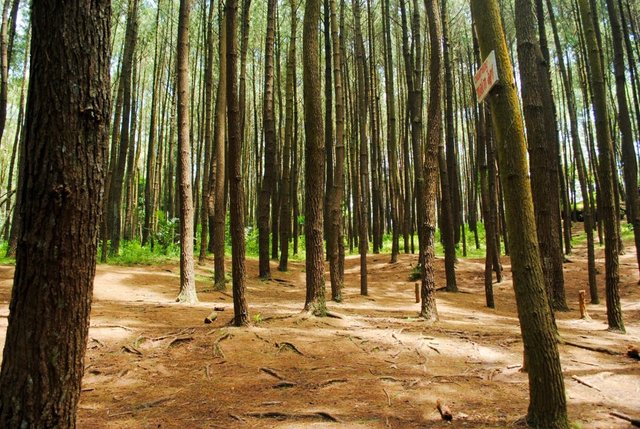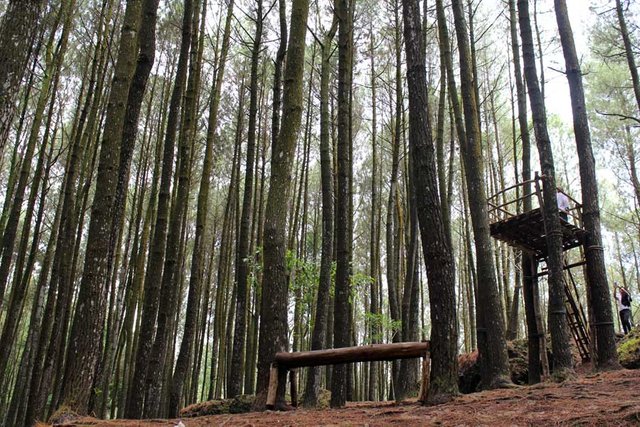PINE FORESTS MANGUNAN

Jogja in the morning seemed deserted, without many vehicles passing by. As the sun still shines shyly and some people prefer to curl up in the blankets, some youngsters look eager to pedal a bike on Dlingo's hilly and snaking hill. Without bothering to swim a bicycle, YogYES went through a similar path this morning. A field by the side of the road became our stop. Across from where we turned off the vehicle engine, a row of towering pines filled the view. Imagine if the weather is foggy, then the atmosphere of the forests of Pacific Northwest can be enjoyed in Jogja.
Pine Forest Mangunan, that's part of the forest in the area of RPH (Resort Management of Forests) Mangunan is overgrown with Pinus merkusii plant is called. The location that can be taken in the direction of Imogiri Raja's grave site makes many people mistakenly call it Imogiri Pine Forest, especially tourists who come from outside Jogja.
Before becoming one of the tourist destinations, the forest in the Mangunan area is a barren land that is then reforested. Not only pine, other tree species such as mahogany, acacia, hazelnut and eucalyptus are also grown on an area of approximately 500 hectares of this. Now the Mangunan area, especially the part planted with pine trees not only serves as a protected forest but also managed as one tourist destination. Various tourist facilities such as substations of view, stage show that blends with nature, public bathrooms, musholla and simple stalls had been built in this tourist area. Not only the atmosphere of the beautiful forest that attracts the attention of many tourists, the existence of the source of the spring Bengkung believed by the surrounding community as the location of Sultan Agung Hanyakrakusuma hermitage also attracts pilgrims to come to visit. To find the site of the spring which was then built by the Dutch government in 1925 to 1930 there are several roads that can be taken, can be trekking from the parking lot through the forest that meet tightly outbound Watu Abang or a further circular road but can be reached by bicycle or motorcycle.
When we set foot on the ground that was mostly covered with dried pine-like tapestries, the sun was rising high and was seen beginning to peek from the sidelines of the pine. The warm glow inevitably repels the cold that has accompanied since we came. The chatter of a crowd of young people punctuated with laughter began to fill the silence that had only contained the sound of friction in the leaves. It did not take long, some of them began to pose fun and perpetuate the style of using the camera. Crisscrossed on pine trunks that have been transformed into simple benches or sitting on a swing with spoiled poses.
The pine-forest atmosphere that is always touted like forests in Forks or other small towns in Evergreen State in a Hollywood drop-out movie a special attraction for photography lovers and selfie enthusiasts. Until no wonder the pine forest is often visited for photography purposes including pre-wedding. Even local pokdarwis deliberately build a special spot so often this place is used for pre-wedding. In addition to the row of pine trees that enhance the background of the photo, there is an interesting philosophy about pine trees as a symbol of Korean love. According to them, a pine tree with a straight trunk is a symbol of love that is straight and unbranched. While the pine leaves are always green is likened to a never ending love, Everlasting love.
While people are excited to capture every moment in camera shots (occasionally I also capture with the camera as well, hehe), I chose to enjoy the jungle atmosphere in a hammock swing under the canopy of pine foliage. The rustling of leaves and twigs becomes a natural symphony that is able to darken everyone into fantasy. The serene atmosphere in the Pine Forest Mangunan was able to obliterate all the weights and complexities that filled the alleys of the mind.


